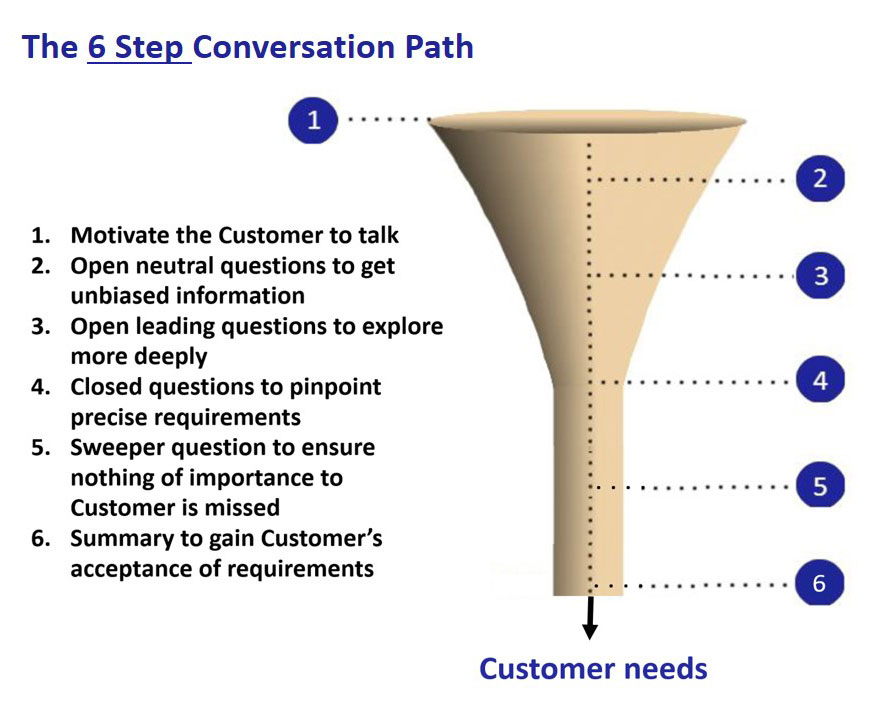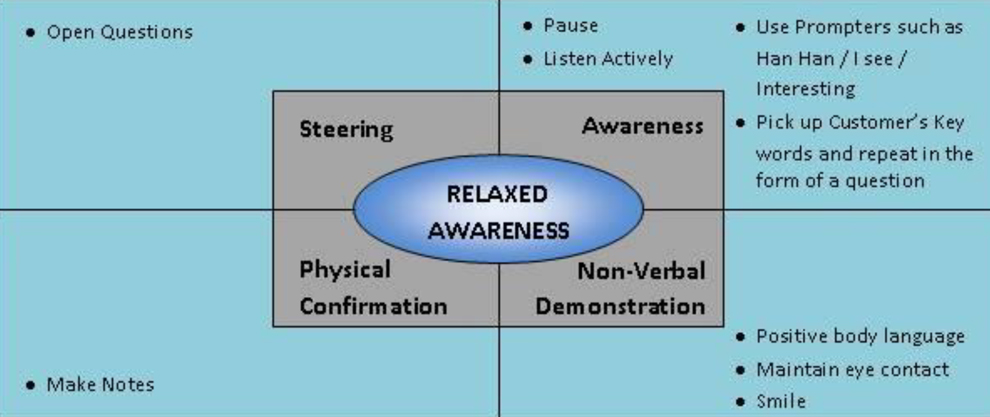Understanding Customer needs.. The power of asking questions
Business of online sales is growing. However a large proportion of business is still transacted through Personal Sales, and increasingly through virtual media. Field sales people always say, in training and development programmes, that their job is essentially that of fulfilling the Customer’s needs. They are very honest when they say this, and sincerely try to do so. But the moot point is this. Are these salespeople clear on how to first understand the need of a given Customer and then try to fulfil that need with feature(s) of the product and service?
.. Or,do salespeople aim to fulfil an assumed need?
Sadly, quite a few salespeople fall in latter category. The key rule in personal selling is: Never present a feature unless the need is clear -
- Need as recognized by the Customer.
- Not the need for a product, but need in the usage of product.
- Need as shaped by preferences of the Customer as an individual.
Asking questions and developing good listening skills is the only way to do all of above. Any training and development event for understanding Customers better must include training on questioning technique.
School Hostel management in the first problem above had plans to expand the hostel after year or two. This fact was not part of the tender information but was revealed to the Salesperson through systematic probing and her good listening skills. Therefore easy-to-assemble bed bunker stands were preferred to avoid of hassles of retendering. That was the 'need in the product' rather than the 'need for the product'.
Knowing how to ask questions and what questions create what effects, is the art and science of asking questions. Effective communication also emphasizes listening skills and therefore use of good questions is part of training and development for active listening skills. If the participants of Chinese Whispers were encouraged or allowed to ask questions to the previous person, the end message might be less distorted!
.. the need in the product, rather than the need for the product
Type of Questions
Open Ended Questions - or simply - Open Questions - start with the following words: What, Where, Why, How, Who, When, Which. An open question is called so since the person who asks questions is open to information. Using more open questions is very helpful to define the Customer’s requirements well.
Here are some examples of Open Ended Questions:
- How is the weather today?
- What is an RT-PCR Test?
- Why is it better than an RAT?
- When will the covid vaccines be available in India?
The open questions by which we do not give any direction to Customer's answer are called as Open Neutral Questions (ONQ). If the open question aims to influence the Customer's answer in a particular direction then it is called an Open Leading Question (OLQ). Asking good OLQ requires great listening skills, because you have to formulate it quickly based on what the Customer is saying to you in response to an ONQ.
If the question is such that we are only seeking either decision or confirmation or both, of what we believe we know, then we are closed to information and hence it is a Closed Ended Question - or simply - Closed Question. Such a question would normally start with words Is, Am, Are, Do, Can, Have. While there is a time and place to ask closed questions, too many of them and asked without motivation can irritate the Customer since it looks like a detective.
Here are some examples of Closed Ended Questions:
- Can you drive a car?
- Have you got the necessary budget approvals for this deal?
The Sweeper Question
Often, it becomes necessary to ensure that we have understood and absorbed everything that the other person wants to convey. Particularly, in sales conversations, the salesperson has to make sure that nothing the Customer considers important, is missed. A ‘Sweeper Question’ is used to achieve this. As the name indicates, a sweeper question, sweeps for anything that may have been missed by the salesperson.
Examples of a sweeper question: “Anything else Sir?” “Have I missed anything?” A sweeper question also helps the salesperson to move smoothly to summarizing the conversation
Funnel Technique for asking questions - A powerful tool to encourage the flow of conversation:
‘Funnel Technique’ is a proprietary working tool of Mercuri International. This is not to be confused with what is commonly called as a Sales Funnel – sometimes used for forecasting. Funnel Technique, which is a questioning technique, starts with motivating the Customer (existing or new), asking open neutral questions to get unbiased information, asking open leading questions to probe more deeply and closed questions to pinpoint precise requirements.
At the end of the funnel, the sweeper question helps ensure that nothing important for the Customer has been missed. The summarizing that follows, improves the effectiveness of the sales call. See illustration of the funnel technique below.
DEFINING THE CUSTOMER’S REQUIREMENTS Controlling the call by Funnel Technique
Key step is step 1 – motivating the Customer to answer questions. Otherwise, he will get irritated and not understand why he is expected to put up with what he will see as ‘questioning’. Although this step looks easy it is not. It must be covered well in any training and development programme.
Asking questions is not “questioning” the Customer
Use of questions in funnel technique must not be done to carry out “questioning”, but to carry out a conversation. Nine supplementary tools shown in the visual below will help convert the funnel technique to conversation skills and help create an excellent rapport.



















